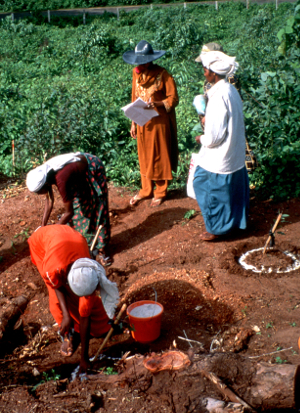Possible praise blocked by DFAT obscurity
 Researchers want to know how effective our foreign aid spending actually is, amid big cuts and loud criticism.
Researchers want to know how effective our foreign aid spending actually is, amid big cuts and loud criticism.
Some hold the view that foreign aid spending largely pays for the travel bills of not-for-profit bosses, and has only a minimal effect on the ground.
With international aid and development at a crossroad, two local researchers are trying to find out where the money goes.
Deakin University’s Professor Viktor Jakupec and Dr Max Kelly say there is insufficient evidence about the impact of foreign aid investment, whether positive or negative.
But this information is more important now than ever, given that since the Global Financial Crisis, many governments including Australia have scaled back on foreign aid.
A core focus of many donor countries, including the Australian Department of Foreign Affairs and Trade, is now on value for money and aid for trade.
“The commercialisation, and financialisation of foreign aid remains a vexed question. Understanding the impact of aid under this policy on social, economic and political development is increasingly important,” the team says.
“The issue is what the impact of foreign aid is, but when one looks at the major agencies, like the World Bank, International Finance Corporation and Asia Development Bank, there is little political will to make public any evidence of this impact.”
Research so far suggests the agencies are often focusing on short term outputs, rather than engaging sufficiently in the impact of their projects.
“Taxpayers' money is going into something but we don't know what it does, can do or will do,” the researchers say.
They added that some aid agencies are using up to a 20-year framework to measure impact, “but that is questionable because in 20 years' time there will have been so many other influences. Understanding impact needs to address short, medium and long term timeframes”.
The experts say the lack of transparency means it is not possible to comment on the impact of Australia’s multi-billion-dollar aid cuts.
“We don't know the impact of the cuts to aid because we don't have sufficient evidence,” Professor Jakupec said.
In conjunction with limited understanding of the impact of aid, a second and parallel issue is the rapid changes in the whole aid arena.
Traditional structures such as the USA-led World Bank and the Japan and USA-led Asian Development Bank, are likely to have to compete with newly formed institutions such as the Chinese-led Asian Infrastructure Investment Bank.
It is hoped that new donors will challenge existing, and perhaps inadequate, measures for demonstrating accountability of funding; meaning the question of impact becomes more acute.
These two institutions will essentially be in competition and their research questions how is Australia going to benefit, or otherwise.








 Print
Print